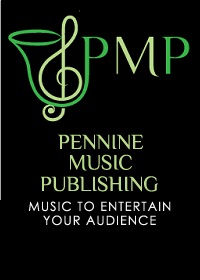2004 All England Masters Championships - Test Piece Review
25-May-2004We look at Peter Graham's fine set work for this years contest - Harrison's Dream.
 Harrison's Dream - Peter Graham
Harrison's Dream - Peter Graham
Peter Graham wrote this wonderfully descriptive piece for the National Brand Championships of Great Britain held at the Royal Albert Hall on Saturday 21st October that year and which was won by the BAYV Cory Band. It has remained since that time one of the most popular major test pieces at the top most level of banding.
It takes its inspiration from a naval disaster of 1707 and the ceaseless work of the clockmaker John Harrison to produce a timepiece that could be used to measure Longitude, and thus enable ships to navigate safely.
The composers relates the story himself : "At 8.00pm on the 22nd of October 1707, the Assocation, flagship of the Royal Navy, struck rocks off the Sicily Isles with the loss of the entire crew. Throughout the rest of the evening the remaining three ships in the fleet suffered the same fate. Only 26 of the original 1647 crew members survived. The disaster was a direct result of an inability to calculate longitude, the most pressing scientific problem of the time. It pushed the longitude question to the forefront of the national consciousness and precipitated the Longitude Act. Parliament funded a prize of £20,000 to anyone whose method or device would solve the dilemma.
For carpenter and self taught clockmaker John Harrison, this was the beginning of a 40 year obsession. To calculate longitude it is necessary to know the time aboard ship and at the home port or place of known longitude, at precisely the same moment. Harrison's dream was to build a clock so accurate that this calculation could be made - an audacious feat of engineering.
This work reflects on aspects of this epic tale, brilliantly brought to life in Dava Sobel's book Longitude. Much of the music is mechanistic in tone and constructed along precise mathematical and metrical lines. The heart of the work however is human - the attraction of the £20,000 prize is often cited as Harrison's motivation.
However, the realisation that countless lives depended on a solution was one that haunted Harrison. The emotional core of the music reflects on this and in particular the evening of the 22nd October 1707."
After those initial Championships, the piece was used as an Own Choice selection at the 2001 Europeans by both BAYV Cory and CWS Glasgow, and by Tredegar in 2002. The popularity of the piece has meant that it will also be used as the set work for the 2004 All England Masters Championships.
It opens in fantastic fashion - marked Allegro quaver = 168. The percussion set the tempo (many have set off as if the clock had been manically overwound) and many a band have come a cropper by trying to play this section too fast. YBS will not want to be reminded of London 2000, when the judges tore them apart before their ship had left dock. There will also be many a second and third cornet player cursing the composer after trying to untangle their third fingers from around the valves.
After that the mechanical approach continues apace with the consistent beat of the clock ticking away in the background and an Eb bass part that only the best will master. And if you thought the tempo at the beginning was high, come the Ritmico at letter E it flicks up a couple of gears and moves into electric territory at quaver = 192. Ritmico and bleeding hard. Around letter H the cornets have a devilish part before we move into a grotesque waltz feature (all druken sailors) whic features a nautical bit of euph playing. There is then a lovely section of playing that is marked Largo which features a plaintive cornet sol before we move into a section of calmness as if the sea itself is clear and the wind is settled.
The cornets though have a tough time of it (up amongst the crows nest in range) with their part soaring up to top C and D - all with a sense of serenity. It is mightily difficult, but when it comes off it is quite beautiful. The tenderness continues before we come to the most surreal moment of the work when the echoes of the lost souls of previous ships are marked with ghostly small bells. This is a section that is sometimes overlooked as just effect, but when it is played with intelligence and understanding it is as moving as you like and sends a shiver down the spine. You can almost feel the ships slipping below the waves, their bells ringing out for a last desperate time before the vessel and it's sailors sink to the leviathan depths.
Then comes triumph as Harrison sets to work once more and finally cracks the problem - the tempo is once more frantic, as if he despairs that he will never find the secret of Longitude before the final build of intensity to the climax of his historic achievemnt. The calmness returns and for once Harrison after such a long and tortuous self journey finds peace (and a few bob in his pocket). The music finally ends with a huge chord of declaration. Harrison has achieved his dream.















